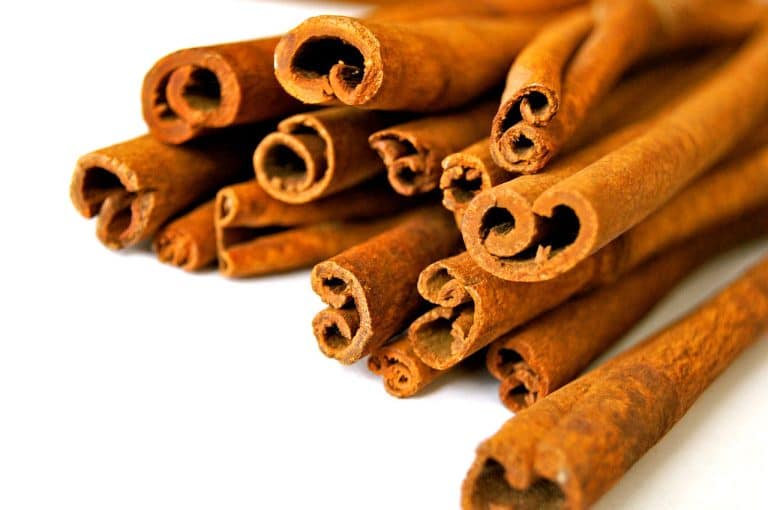Insect Repelling Plants
There is a wide range of insects that we find on a daily basis in our environment. Some are harmful, whereas others are considered very beneficial for human beings. These insects turn into a nuisance when they invade houses and buildings. Some are also biting creatures that cause severe stink and redness. Insects like mosquitoes and flies are dreadful disease-spreading ones, hence controlling their population is quite essential to keep away those diseases.
For preventing such insects, people mainly use the harmful insecticides, pesticides and other chemicals. But using such dreadful chemicals near the house and other places, where adults as well as kids often visit are dangerous too. Smelling or contacting these chemicals can lead to dangerous side effects. Hence, to prevent the insects, as well as the usage of chemicals, a natural way of planting few insect repellent plants can be considered.
What is an Insect Repellent Plant
Plants that repel the insects or prevent them from entering the house and the premises are known as repellent plants. There are many flowering plants, herbs and native shrubs that can be categorized as effective repellent plants. They will not only keep away the insects, but will also enhance the charm and fragrance of the patios and gardens. Though there is a lack of enough evidences, the researchers believe that the essential oil in the plants is the actual insect repellent. Insects do not like that particular smell, and often avoid such areas where these kind of plants are present. The fragrance of such herbs and plants releases tiny globules in the environment, which contain the oils. These globules in the environment become volatile during the hot and humid climate, and leads to the evaporation of these essential oils that later turn into vapors.
List of Insect-Repellent Plants
Some of the Herbs that are considered as insect repellent plant are-:
Basil

Photo by: Christian Bauer
Ocimum Basilicum, also commonly called Sweet Basil or Thai basil, is a culinary herb belonging to the family Lamiaceae, in which the members are mostly mints. It is believed to be endemic to India, where it has been present since 5000 years. Mosquitoes, house flies, white flies, asparagus beetles and carrot flies are some of the insects that are well prevented by this particular herb. It can be planted in containers inside the house or in cans kept outdoors, where usually people spend time to relax. Basil contributes a considerable role in the Southeast Asian cuisines. It is easy to make a spray from the basil plant to repel these insects. The simple method is, take about 4 to 6 ounces of clean, garden fresh basil leaves in a vessel, pour boiling water about 4 ounces, and keep the leaves steep for some hours. Then separate all the leaves and squash its extract into the mixture, after that, blend about 4 ounces of vodka with the above said basil – water combination. Now the repellent mixture is ready. Keep it in refrigerator and implement it as a spray. Along with the basil leaves, the stems can also be added to this mixture. Be alert while using the spray, it is harmful when it gets in contact with eyes, nose and mouth.
Lavender

Lavender, also known as Lavendula genus is a group of over 39 identified species of plants that belongs to Lamiaceae family of mint. It is endemic to the Old World, and can be commonly found along the areas of Cape Verde to Canary Islands. It is also seen in East Africa, Southeast Asia and near the Mediterranean regions. Most species are found in the temperate climates, and are considered as an ornamental plant. It is quite famous in the commercial world, especially for its essential oil, which helps to repel the insects like flies, fleas, mosquitoes and moths. It has a pleasant sweet smell, due to which people have been using it since ancient times on their clothes and at home. But fortunately, these insects do not like its sweet smell. Hence planting this plant in the landscape will keep away all these insects. It is easy to plant and maintain. Planting it in a sunny location, near the garden or areas that are more prone to insects and mosquito attack will be beneficial. The essential oil extracted from this plant is also used as an insect repellent by applying to the skin, while going to the patio or garden. Many websites show the methods to prepare body oil containing lavender extract.
Lemon Grass

Photo by: Vaishak Kallore
Lemon grass, biologically known as Cymbopogon is the name of a genus of plants belonging to Africa, Asia, Australia and some of the tropical islands. Basically, this plant belongs to the grass family. Most species are popular for their culinary and medicinal uses, mainly due to its lemon scent. It is a good insect repelling plant that prevents insects like mosquitoes from entering the premise. The candles made out of citronella natural oil extracted from the lemon grass are quite popular as a repelling agent against mosquitoes. The lemon grass is very easy to grow and maintain, as it is mainly grown as an annual plant. A sunny location with well-drained soil condition is best preferred by this grass. It can also be grown in a pot or ground with similar conditions.
Lemon Thyme
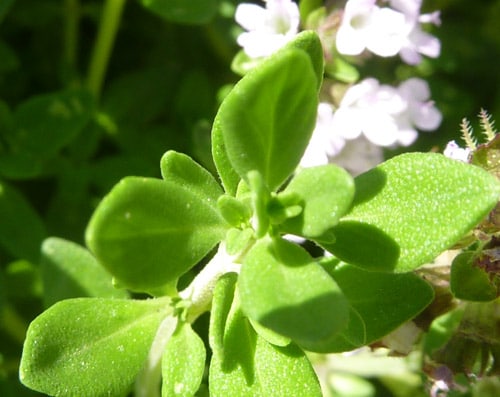
Thymus Citriodorus, which is commonly referred as Citrus thyme or Lemon thyme is a perennial plant that emerges in a mat form and has a very strong lemon scent. It is best known for repelling mosquitoes. It can thrive in rocky or dry garden that has shallow soil and enough sunlight. The plant is not known to repel the insects by itself. The chemicals present in the leaves acts as the repelling agent. Hence, to repel insects, the leaves must be squeezed between the hands and the extract should be applied on the skin.
Rosemary

Rosemary, biologically known as Rosmarinus Officinalis is a woody herb. It is an evergreen perennial that has a very soothing fragrance, and attractive flowers of white, purple, blue or pink shade. It is endemic to the Mediterranean region. It belongs to the Lamiaceae family of mint. This fragrant plant is a beneficial insect repellent that repels mosquitoes and similar types of insects, which are a threat to vegetable plants. This useful plant can be cultivated in various forms like the herb garden, in a patio or in a landscape of plant beds. The oil of this plant is also considered as an effective repellent, as it irritates the insects. A repellent spray can be made in a few simple steps by boiling some dried rosemary, adding an equal quantity of water, letting it sit for around 20-30 minutes and then straining this liquid into a half gallon sized container that consists of one quart of cold water. It can be stored in a refrigerator, and used it in small quantities when required.
Spearmint

Spearmint is a plant from the mint family that is endemic to Asia and Europe. It is also seen in western and northern Africa and South America. It is easy to grow as it thrives in all regions having temperate climates. It can be grown in pots that must be placed in partial to full shade, but it can also thrive in full sun. It also thrives well in loamy soil that contains rich organic content. The oil of this plant is known as the best repellent agent to prevent insects and pests. The smell of this oil is very strong and unique, and it is assumed that this strong smell irritates the insects. This aromatic property is present in the leaves as well as flowers and stems. The extract from the leaves can also be used as a mosquito repellent by combining it with cheap vodka and apple cider vinegar. Other than that the smell of the whole plant will keep the insects away, hence it must be planted in the garden or patio.
Some of the Ornamental Flowers that act as an insect repellent plant are-:
Alliums
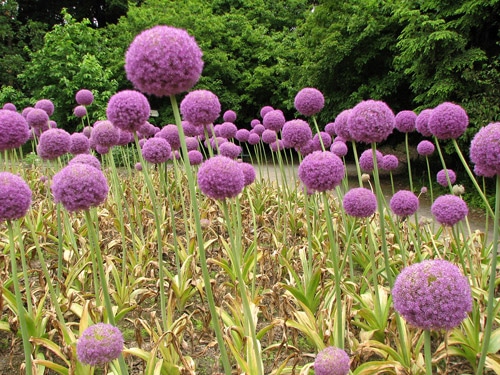
Allium Giganteum – Photo by: Chris Gladis
The members belonging to the Allium genus like the Allium Giganteum are considered excellent pest repellent plants. Allium Giganteum is also commonly referred to as Giant Onion, and is one of the onion’s Asian species. It is endemic to southwestern and central Asia, but has now grown popular in many countries as a flowering plant. This plant exhibits purple umbels during the early to the middle of the summer. The flower head of this plant reaches up to a 6 feet height, which is mainly considered as the natural broad-spectrum insecticide. They are known to shoo away numerous pests and insects like aphids, slugs, cabbage worms and carrot flies. Planting this ornamental plant in the garden or in the vegetation bed will benefit plants like potatoes, cabbage, carrots, broccoli, tomatoes, peppers and many others.
Chrysanthemums

Chrysanthemums sometimes referred to as Chrysanths or Mums, belong to the Chrysanthemum genus in the Asteraceae family. This flowering plant is endemic to northeastern Europe and Asia. It is quite popular as an insect repellent plant that prevents roaches, ticks, ants, bedbugs, mites, harlequin bugs, fleas and Japanese beetles. The presence of Pyrethrums in this plant, play the role of an effective repellent against the insects. It has the ability to kill the jumping and flying insects, hence it is a main ingredient in the commonly found pesticides, pet shampoos, aerosol bombs and indoor sprays. The flowers of the Chrysanthemum Plant are also used to prepare an insecticidal spray, but using it in this form is quite dangerous, as the Pyrethrum in this spray can cause cancer in human beings.
Marigold
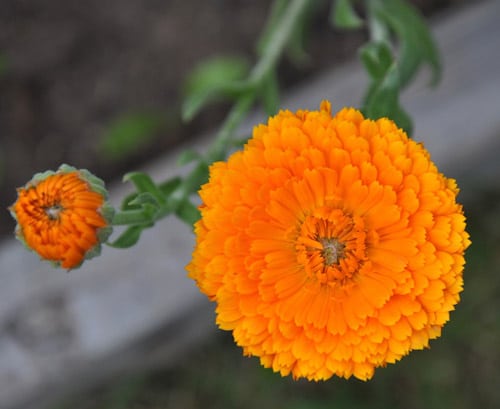
The Mexican marigold, also known as Aztec marigold is biologically known as Tagetes Erecta, and is another flowering plant that repels insects and pests. Even though it is endemic to the Americas, it is generally known as African marigold. It is mainly found in the wild regions of Mexico, including San Luis Potosí, State of México, Chiapas, Veracruz, Tlaxcala, Puebla and Sinaloa. The fragrance of this flower and of the other similar species acts as the repellent that prevents insects like mosquitoes, aphids and even animals like rabbits. The marigold roots are quite famous among farmers as they depend on this plant to repel small nematodes. They are best suited to plant throughout the borders of the vegetation field or the garden that will prevent the insects from entering and affecting the vegetation.
Nasturtiums

Photo by: Ardfern
Nasturtium, also known as Tropaeolum is the name of a genus that comprises of nearly 80 species of perennial and annual flowering plants. It belongs to the Tropaeolaceae family. The name was derived due to its oil content, which is similar to the Nasturtium Officinale, also known as Watercress. This flowering herbaceous plant is grown for showy purpose, as well as for repelling the insects. It repels insects including aphids, bugs, many beetles, Cabbage Loopers, whiteflies and many more. It releases a chemical in the air that acts as the repelling ingredient for preventing the insects from attacking not only the Nasturtium Plants, but also the other plants surrounding it. Vegetable plants like cucumber, tomatoes, kale, broccoli, collards, radishes, kohlrabi and many others are protected by just placing this plant in the same garden.
Petunia
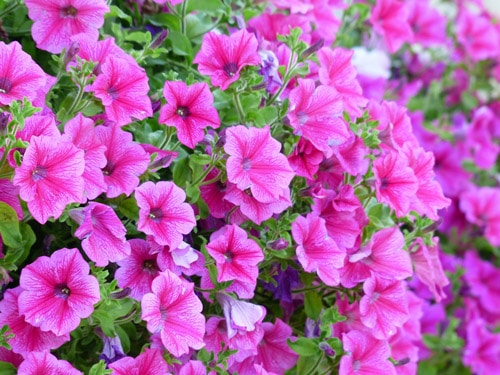
Petunia is a group of flowering plants that belong to South America. This genus is comprised of plants that are related to Cape Gooseberries, Deadly Nightshades, Chili Peppers, Tobacco and similar species that belong to the Solanaceae family. They are helpful in preventing insects like aphids, asparagus beetles, tomato hornworm, squash bugs and. leafhoppers. Also, they are so showy that it is best suited as an ornamental plant. It is also available in a wide range of colors to make the garden look beautiful and at the same time, protecting the other vegetation. It is also very easy to maintain this plant; hence it is one of the best insect repellent plants.
Carnivorous Plants
Pitcher Plant

The pitcher plant is a unique type of carnivorous plant that traps and feeds on the insects. This plant is the biggest group of carnivorous plants. They are quite showy, hence is considered as an ornamental plant as well. This unique plant attracts the insects towards its “pitcher”, which are the modified leaves of this plant. It is made of a combination including fragrance, nectar and color, which lures the insects. When the insect gets trapped inside the pitcher, it reaches a slippery area where the leaves have downward growing hair. From there it reaches an area full of liquid where it drowns and eventually dies due to exhaustion. Even if it tries to escape, the downward growing hairs prevent it due to their slippery nature. The insect is then digested by this plant. The insects that commonly get trapped are ants, bees, flies, wasps, snails, beetles and slugs. This plant, which is seen in the wild areas usually, prefers a sunny location that also has some moisture. Hence, it is actually a difficult plant to grow in homes because it may be difficult to provide both the sunlit and damp conditions at the same time. But it is indeed a good insect repellent plant that easily kills the insects.
Other Insect Repelling Plants
Artemisia

Artemisia is a genus of plants that belongs to the Asteraceae family of daisy. This genus comprises about 200 to 400 species. The species include plants like Wormwood, Sagebrush and Mugwort. Artemisia comprise of hardy herbaceous shrubs and plants that possess powerful chemical ingredients in the essential oils derived from this plant. The species of this genus have very powerful aromas and very bad taste, which affects the insects like moths, flies, fleas and others. Most of the species are ornamental plants; hence it can be grown in the gardens and patios for showy purpose, as well as for repelling the insects.
Citronella Grass
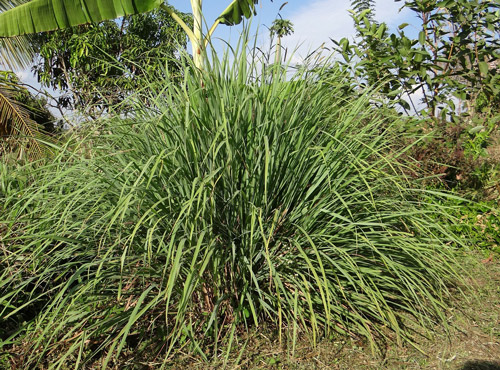
Citronella grass is an effective plant that is quite popular for repelling mosquitoes. This plant has a distinct smell that acts as a repellent against such insects. Gardens and similar places encourage the plantation of this lemon scented grass to keep the population of insects at bay. Just the presence of this grass has been enough to keep away mosquitoes and similar insects. It is easy to maintain and grow; hence it can be included in the list of best repellent plants. The leaves of this plant contain essential oils that can be applied to the skin to repel mosquito bites. Infusing or drying the plant to make oil for applying to the skin or living space is also effective.
Catmint

Nepeta Cataria also termed as Catnip, Catmint, or Catswort belongs to the Nepeta genus in the Lamiaceae family. This plant is endemic to the Middle East, Europe, China and central parts of Asia. It is also commonly found in North America and New Zealand. It easily grows everywhere; hence sometimes, it is considered as a weed. It belongs to the mint family, and is easy to maintain. According to some studies, this plant is considered as more effective than the mosquito repellent chemical DEET. Hence planting it in the garden and areas near the house will be very beneficial to prevent the insects.
Garlic

Garlic is renowned for repelling many insects, including mosquitoes and slugs. It is, hence, very commonly used in making garlic sprays. These sprays are available in shops, which can be directly applied to the skin. It acts as a natural barrier on the applied area against the mosquitoes. Each spray has different ingredients along with garlic, as it acts differently on different species of mosquitoes. The main repelling agent in garlic is assumed to be the Allicin that is released in the air. The presence of this Allicin causes irritation to mosquitoes and similar insects, hence they avoid garlic plants. Also, the strong smell of the garlic is believed to overwhelm the smelling sense of mosquitoes, which affects their prey finding ability. Many scientific tests have been proven regarding the repelling ability of garlic against the insects. To protect an area like the garden or patio, a good quality garlic spray available in the market can be used. Even the garlic compound can be used on the skin to prevent mosquito bites, and generally no side effects have been recorded till now. Evidences support the view that consuming much amount of garlic will prevent the insect bites.
Tea Tree

Photos by: James Steakley
The oil from the tea tree is an essential oil that has a camphoraceous odor which is very powerful smell. The color of this oil is either colorless or pale yellow. The leaves of the plant Melaleuca Alternifolia are crushed to make this oil. This plant is endemic to Australia. This oil has been used on the animals since long. Even human beings use it to repel the insects and mosquito bites. It is believed to be a good repellent because its strong scent is unbearable for bugs and other insects. Applying this can even irritate the bugs. It is a natural way to keep away the bugs and similar insects away.
Snowbrush

Photo by: Matt Lavin
Snowbrush, biologically termed as Ceonothus Velutinus, is also commonly called as Buck bush, Snowbush and Tobacco-Bush. It belongs to the buckthorn family and is endemic to the United States. It is found above an elevation of 3,500 feet above sea level. It is easy to grow, as all conditions like dry or moist, shade or sun suits this plant. It is a good natural insect repellent plant that can be kept in any landscape to prevent mosquitoes and other insects.
Coriander

Coriander, commonly known as cilantro or Dhania is an herb from the Apiaceae family. This annual plant is endemic to Southwestern Asia, Northern Africa and Southern Europe. This plant can be used to make an organic insect repellent spray. Add half a bucket of coriander leaves, basil leaves or Marigold leaves to a bucket of hot and boiling water. Leave this solution overnight and then strain. Then add soap powder around two cups to the strained solution.
Tobacco
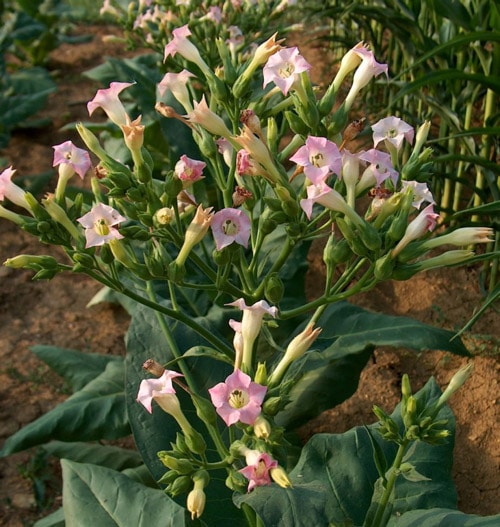
Photo by: Markus Hagenlocher
Nicotiana Tabacum, also known as tobacco, is an herbaceous plant belonging to the Solanaceae family. It is a popular plant, as its leaves are processed into the harmful substance called as tobacco. This plant is used to prepare nicotine sprays that are available commercially. It is a traditional method for repelling a wide range of insects and pests like gnats, whiteflies, thrips, leaf aphids, root aphids, leaf mines and many similar ones. But the problem in using the commercially available sprays is that it can turn strong to human beings too. Hence, preparing a homemade tobacco juice can be beneficial to prevent these insects. It is much milder to use, and possibly won’t have any side-effects on human beings.

Having discovered a fondness for insects while pursuing her degree in Biology, Randi Jones was quite bugged to know that people usually dismissed these little creatures as “creepy-crawlies”.



